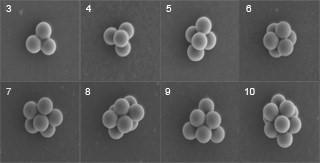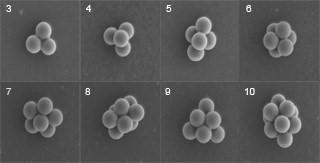Will Your Next Hard Drive Be Liquid?
August 19, 2014

Two material scientists, Sharon Glotzer and David Pine, are on a mission to create the world's first liquid hard drive, which should prove to allow for mega data densities. Their current calculations estimate that one teaspoon of this liquid data would be able to store 1 TB of data. That's science fiction-level impressive.
This research is still at its infancy; there is no working prototype. However, Glotzer and Pine hope to have a commercially viable liquid hard drive in the next decade or so. The "soft matter" they have created is innovative nonetheless.

Soft matter refers to liquids, foam, polymers, and biomaterials that have one thing in common: stable and predictable molecular configurations. Glotzer and Pine have engineered dimpled nanoparticles that behave predictably as they change configuration due to shifts in temperature. The photo above shows the nanoparticles' configuration changes.
The nanoparticles are suspended in liquid. They are not necessarily liquid in and of themselves, but they are part of a colloid. The basic configuration of the nanoparticles always has four or more particles attached to a central sphere. When heat or energy is applied to the solution, the configuration shifts. Being able to verify which state the nanoparticles are in would allow the researchers to attribute values of zeros or ones to the two different phases. However, there is currently no viable method of doing this. Furthermore, using this material as a data store would require a way to alter the state of individual clusters of particles consistently. Still, Glotzer and Pine are hopeful.
This research is building on the work of other researchers to find denser ways to store data. Harvard researchers have recently stored 700 TB on a single strand of DNA, so DNA still takes the cake when it comes to natural data-storing ability. However, it may not become a USB stick anytime soon. A more viable innovation, which may hit the market sooner, is a method IBM is using to store binary data on individual iron atoms. One bit of data can be stored on 12 atoms, and a whole byte of data can be stored on 96 atoms. This technology still needs work to become the next hard drive, but there is already a working preliminary model and method. The world's next affordable supercomputer could be close at hand.
Related posts:
About the Author(s)
You May Also Like





